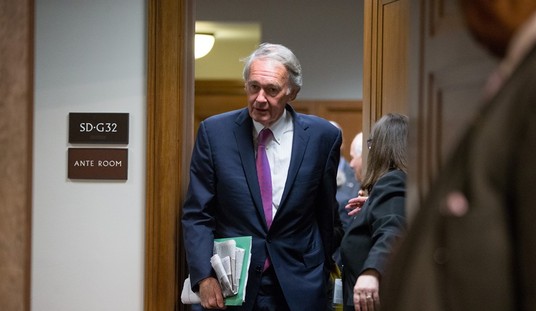Election Day will produce a new Republican Congress, or so the latest polls tell us. If so, the huge losses for the Obama Democrats -- both in 2010 and this year -- will have come in large measure from the economic failures of a party that has moved radically left over the past 20 years.
Hillary Clinton just argued that corporations and businesses don’t create jobs, and that a higher minimum wage and other government actions do. It showcases just how far the Democrats have moved left since her husband, working with a Republican Congress, launched pro-growth supply-side policies like free trade, welfare reform, lower investment tax rates, limited spending, and a strong dollar.
I’ve always believed the 1990s were Ronald Reagan’s third term. And while mistakes were made over the years, the U.S. created about 50 million new jobs between 1981 and the onset of the Great Recession in 2007.
Unfortunately, the free-market model has largely been discarded in recent years -- not only in the U.S., but around the world -- as Keynesian spending, over-regulating, tax-the-rich redistribution, and berserk money have come into vogue.
It’s all wrong. The poor results show it.
A Republican victory on Tuesday won’t change this. But the GOP can make an early start on free-market energy reforms, lower corporate tax rates, holding back the regulatory tide, and knocking down some Obamacare tax hikes. Republicans can also continue the war on overspending. Since the GOP landslide in 2010, government spending as a share of GDP plunged from 24.4 percent to 20.3 percent. This has had something of a tax-cut effect, and shows what Congress can do if it has a mind to do it.
Recommended
But the bigger theme is the need for the U.S. and the world to return to the free-market, free-trade, entrepreneurial, supply-side, tax-incentive model of growth with stable money. That model worked during the Coolidge-Mellon 1920s, the JFK 1960s, the Reagan 1980s, and the Clinton 1990s.
If nothing else, a new Republican Congress must message clearly that the U.S. will stop the recent leftward economic lurch. It’s not hard to pinpoint what’s gone wrong, propose positive solutions, and argue that the economic ship can be righted fast.
And here’s a good start at pinpointing what’s gone wrong: There’s not one whiff of evidence that the Federal Reserve’s quantitative-easing process helped the economy.
Over the last eight quarters, which roughly spans QE3, the real economy grew by only 2.3 percent at an annual rate -- the same rate since the recovery began in 2009. Job creation has barely increased. Of the $1.7 trillion the Fed added to its balance sheet, $1.25 trillion came back to the Fed in the form of excess bank reserves. Nominal GDP grew only 3.8 percent annually during QE3, nearly matching the 3.9 percent annual growth during QE2.
The M2 money supply grew at 6.5 percent during QE3, actually less than the 8.2 percent of QE2. But the important point here is that velocity (the rate at which money changes hands) has been falling by roughly 3 percent during the whole recovery.
Yes, the S&P climbed 43 percent. But that’s mostly from record profits and expanding multiples.
And long-term rates haven’t really changed: 10-year Treasuries yield nearly 70 basis points more than at the beginning of QE3, and believe it or not stand at nearly the same level as the beginning of QE1.
In other words, the Fed doesn’t control long-term rates, it hasn’t boosted the economy, and job creation only got slightly better during QE. And the drop in money velocity neutered the monetarist argument that more reserves create more money which grows the economy faster.
At least Janet Yellen ended QE. She gets credit for that. Berserk money may be over.
And the good news is that because the monetarist model failed, the Fed really wasn’t all that loose. Inflation has been running only about 1.5 percent for years, a good thing (though some at the Fed want it higher).
But let me ask you this: Are folks weeping at the gas pump because they pay $3 a gallon rather than $4? No. In fact, the fracking boom has had a far more powerful effect on stimulating growth and holding down inflation than the Fed. With QE over, King Dollar is rising and gold is falling. Good signs.
So let me optimistically argue that the slow-growth economy can be rescued and the fiscal and monetary mistakes can be reversed. Lower tax rates, less spending, deregulation, and a sound dollar will do it. The GOP can make this case -- and right away.
And if the Sandinista Democrats would read a little history, they’d see I’m arguing for the JFK model of growth -- which was the forebear of Ronald Reagan’s supply-side revolution.
It can be done.

























Join the conversation as a VIP Member